 We’ve all known for a long time that TV as we knew-and-loathed-it was under pressure, as people discovered there were things more rewarding in their lives than passively sitting in a darkened room, being bathed in light from a box in the corner of the room, watching whatever the channel controller decided to ‘entertain’ them with.
We’ve all known for a long time that TV as we knew-and-loathed-it was under pressure, as people discovered there were things more rewarding in their lives than passively sitting in a darkened room, being bathed in light from a box in the corner of the room, watching whatever the channel controller decided to ‘entertain’ them with.
In a rather self-serving survey, “Digital Gaming in America”, Ziff Davis Media attempts to further fan the flames of this long lasting discussion, as they reveal that video gamers are watching less TV than they did previously, and will continue to reduce the amount they are consume.
Before you run to your boss, waving a printout of this story in your hand, proclaiming the near-death of TV. The results of the survey do reflect the general trend of what is happening, but do bear in mind the size of survey – 1,500 households (ie people who happened to be in, answered the phone, and had nothing better to do than answer a series of questions), compared with 295m people that live in America isn’t what you’d call statistically robust.
What did they find? About a quarter reduced their TV watching over the last year, with about a further fifth planning to do the same in the coming year. To put some hours against that, they estimate that there’s been a two hours per week drop over the last year to 16 hours a week this year, around a 10% drop.
The wolf isn’t quite at the door of TV. Looking at the hours/week, the reduced figure is still over 2.25 hours of TV a day, quite considerable when you consider what other task people do for that period of time, beyond working and sleeping.
 In 2003 the BBC did some far more interesting research in this area. Of course they found that numbers of hours watched dropped, but what we found significant was that those hours that were being spent in front of the TV, weren’t dedicated to watching it.
In 2003 the BBC did some far more interesting research in this area. Of course they found that numbers of hours watched dropped, but what we found significant was that those hours that were being spent in front of the TV, weren’t dedicated to watching it.
This was particularly true of the younger viewers (34 and under) who were doing other things – texting their friends, Web browsing, talking on the phone, playing games on portable games systems – while in front of the box. They would dip in and out of the TV programme as it was on, occasionally letting it grab their attention – treating it far more like radio. It doesn’t take a great deal of imagination to figure that their attention would be elsewhere during the advert breaks.
Where the Ziff Davis survey does become more interesting is looking at gaming on mobile phones, particularly as this report is US-centric and the market isn’t very mature. A surprising 42% of surveyed gamers had bought games for their phones, and that they’d spent an average of US$13 (~€10, ~£7) each over the last three months.
An additional surprise for us was the length of time the games had been played on the mobile phones – 19 minutes per gaming session. Given the size of the display and general difficulty of playing games on such restricted controls, this is a revelation.
The split of games played was Arcade (57%), Card (44%) and Puzzle (37%) – another suprise for us given the device’s restrictions mentioned in the paragraph above. We suspect that the dominance of arcade games will reduce as players realise thinking games will be more rewarding than twitching with little buttons.
Oh … by the way Ziff Davis just happen to publish the games magazine, Electronic Gaming Monthly, Computer Gaming World, Official U.S. PlayStation Magazine and 1UP.com – and their ad sales people are just sitting there waiting to hear from you if you want to shift your advertising budget from TV to their mags.
Ziff Davis Video Game Survey: Gamers Continue to Cut TV Viewing
BBC – TV’s Tipping Point: Why the digital revolution is only just beginning
 It used to be that artists rebelled against the system, the government, the breadheads and The Man, but artists signed to Sony in Japan are fighting their label’s decision not to make their songs available through the iTunes Music Store.
It used to be that artists rebelled against the system, the government, the breadheads and The Man, but artists signed to Sony in Japan are fighting their label’s decision not to make their songs available through the iTunes Music Store.  Talks between the two electronic giants Sony and Apple are believed to be continuing to resolve the problem.
Talks between the two electronic giants Sony and Apple are believed to be continuing to resolve the problem. 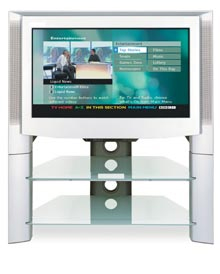 A couple of stories have been circulating about the BBC of late, both concerning their adoption of digital TV.
A couple of stories have been circulating about the BBC of late, both concerning their adoption of digital TV.  Sony BMG’s global digital business president Thomas Hesse was full of optimism about the emerging opportunities brought about by digital distribution channels such as iTunes and ringtones.
Sony BMG’s global digital business president Thomas Hesse was full of optimism about the emerging opportunities brought about by digital distribution channels such as iTunes and ringtones.  The Sony bigwig suggested that the record industry could learn from the movie studios where carefully-timed “release windows” have helped maximise commercial opportunities for new films.
The Sony bigwig suggested that the record industry could learn from the movie studios where carefully-timed “release windows” have helped maximise commercial opportunities for new films.  We’ve all known for a long time that TV as we knew-and-loathed-it was under pressure, as people discovered there were things more rewarding in their lives than passively sitting in a darkened room, being bathed in light from a box in the corner of the room, watching whatever the channel controller decided to ‘entertain’ them with.
We’ve all known for a long time that TV as we knew-and-loathed-it was under pressure, as people discovered there were things more rewarding in their lives than passively sitting in a darkened room, being bathed in light from a box in the corner of the room, watching whatever the channel controller decided to ‘entertain’ them with.  In 2003 the BBC did some far more interesting research in this area. Of course they found that numbers of hours watched dropped, but what we found significant was that those hours that were being spent in front of the TV, weren’t dedicated to watching it.
In 2003 the BBC did some far more interesting research in this area. Of course they found that numbers of hours watched dropped, but what we found significant was that those hours that were being spent in front of the TV, weren’t dedicated to watching it.  Let’s start this week’s news with some nice, old-fashioned, technological paranoia: As a teenager, you start to realise that giving everyone your mobile number, letting people know where you live and freely handing out your email address can be a bad thing. Imagine my surprise then when I found out that the Australian government had
Let’s start this week’s news with some nice, old-fashioned, technological paranoia: As a teenager, you start to realise that giving everyone your mobile number, letting people know where you live and freely handing out your email address can be a bad thing. Imagine my surprise then when I found out that the Australian government had 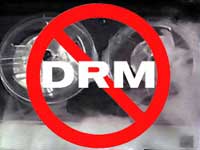 DRM on motherboards
DRM on motherboards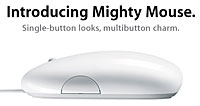 In other news: After years of Apple thinking themselves obviously superior by having just the one mouse button, and after years of jokes about how Mac users are inferior because they can’t use more than the one button, Apple has gone back and decided to bring out a mouse with not one, not two, but three buttons, as well as a four way scroll wheel. They have called their mouse, quite simply,
In other news: After years of Apple thinking themselves obviously superior by having just the one mouse button, and after years of jokes about how Mac users are inferior because they can’t use more than the one button, Apple has gone back and decided to bring out a mouse with not one, not two, but three buttons, as well as a four way scroll wheel. They have called their mouse, quite simply,  It’s farewell to film at Dixons, as the company announced that it would no longer stock 35mm film-based cameras.
It’s farewell to film at Dixons, as the company announced that it would no longer stock 35mm film-based cameras. 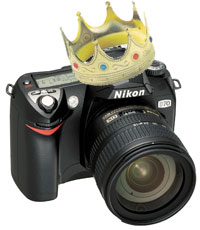 After reaching a peak in the UK of 2.9 million cameras sold in 1989, 35mm camera sales have been steadily falling, with the public being wooed by the convenience, improving quality and falling costs of consumer digital cameras.
After reaching a peak in the UK of 2.9 million cameras sold in 1989, 35mm camera sales have been steadily falling, with the public being wooed by the convenience, improving quality and falling costs of consumer digital cameras.  “Time and technology move on … digital cameras are now the rule, rather than the exception. We have decided that the time is now right to take 35mm cameras out of the frame,” Magrath added.
“Time and technology move on … digital cameras are now the rule, rather than the exception. We have decided that the time is now right to take 35mm cameras out of the frame,” Magrath added.  After a period of speculation, a press release on UK cable company NTL’s Web site makes it official that they intend to move their customers to broadband connection “up to 10Mb as standard.”
After a period of speculation, a press release on UK cable company NTL’s Web site makes it official that they intend to move their customers to broadband connection “up to 10Mb as standard.”  We think it may be some time before this actually gets to the customers, as NTL are also talking of introducing an interim service, ‘The Turbo Button,’ which will burst a connection to higher speeds, when customers are downloading bandwidth heavy content like video.
We think it may be some time before this actually gets to the customers, as NTL are also talking of introducing an interim service, ‘The Turbo Button,’ which will burst a connection to higher speeds, when customers are downloading bandwidth heavy content like video. 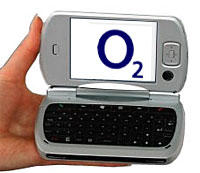 O2 is set to introduce the new Windows Xda Exec, touted as the most feature-packed smartphone ever released.
O2 is set to introduce the new Windows Xda Exec, touted as the most feature-packed smartphone ever released. 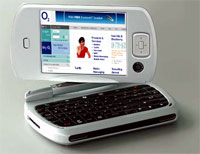 Powering the smartphone is an Intel PXA270 520MHz processor supported by 128MB ROM and 64MB RAM onboard, with expansion taken care of via a MMC/SD Card slot (supporting SDIO).
Powering the smartphone is an Intel PXA270 520MHz processor supported by 128MB ROM and 64MB RAM onboard, with expansion taken care of via a MMC/SD Card slot (supporting SDIO). 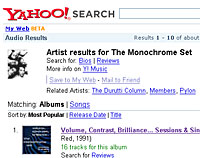 Yahoo is testing a new Audio search facility to let users find audio files on the Web.
Yahoo is testing a new Audio search facility to let users find audio files on the Web. 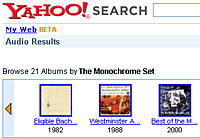 Although the service is still in beta we were impressed with its speedy and simple interface: typing in the name of one of my (sadly) obscure old punk songs immediately brought up the album details, a list of download locations and links to reviews and other released albums.
Although the service is still in beta we were impressed with its speedy and simple interface: typing in the name of one of my (sadly) obscure old punk songs immediately brought up the album details, a list of download locations and links to reviews and other released albums.  Almost a fifth of US consumers have admitted falling victim to identity theft, with younger adults at greatest risk, according to new figures.
Almost a fifth of US consumers have admitted falling victim to identity theft, with younger adults at greatest risk, according to new figures.  Experian-Gallup found that around two-thirds of consumers who have yet to experience identity theft felt that it was unlikely to happen to them, with only six per cent taking the precaution of purchasing some form of identity theft protection.
Experian-Gallup found that around two-thirds of consumers who have yet to experience identity theft felt that it was unlikely to happen to them, with only six per cent taking the precaution of purchasing some form of identity theft protection.